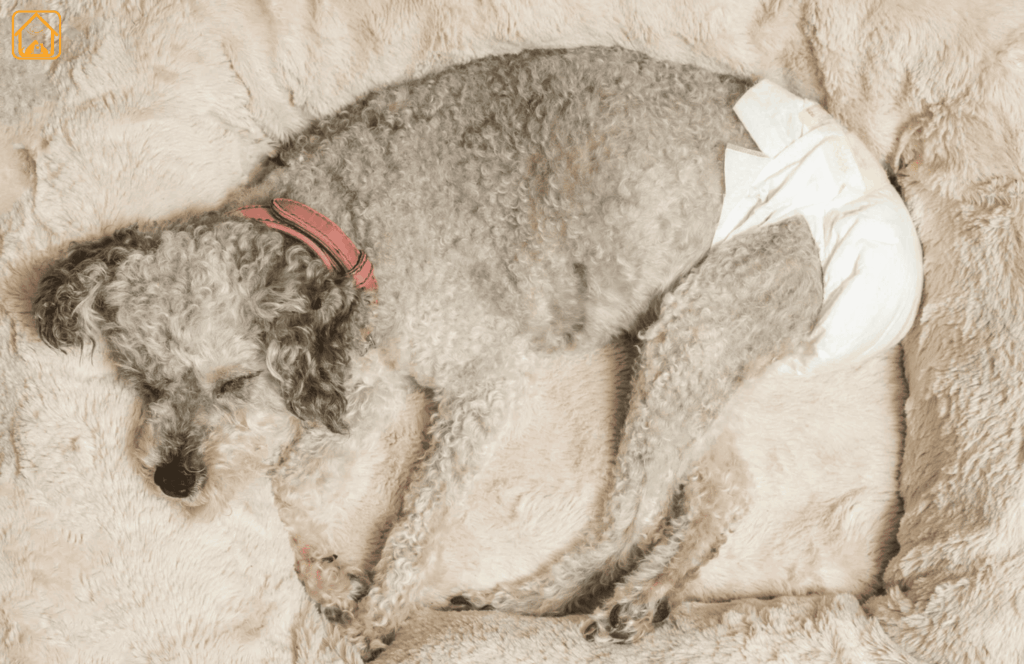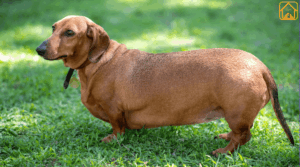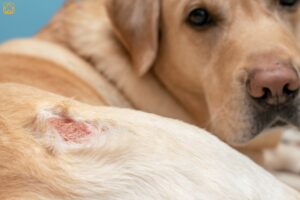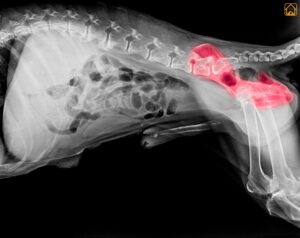What Is the Dog Heat Cycle? (Estrous & Menstrual Basics)
The dog heat cycle also known as the Canine Estrous Cycle is the set of reproductive changes female dogs experience preparing them for potential mating and pregnancy. Unlike humans, who have a monthly menstrual cycle, dogs typically go into heat twice a year. This is why you’ll sometimes hear folks talk about the dog period, dog heat or canine menstruation.
So, what actually happens? Female dogs in heat experience swelling of the vulva, a bloody or pinkish discharge (the “dog menses”), and shifts in behavior. This cycle isn’t just about bleeding, it’s about a whole hormonal change. The heat cycle signals fertility, and that’s why female dogs can get pregnant during this time.
Some pet parents are surprised to learn that “dog period” is really only part of the story. Estrus in dogs includes several phases, not just the days with visible blood. And yes, all unspayed female dogs, including puppies once they reach puberty, will experience this cycle unless they’re spayed.
Stages of the Canine Heat Cycle
The canine heat cycle is divided into four main stages, each with its own signs and purpose. Think of the dog period as the tip of the iceberg, there’s a lot happening beneath the surface.
Understanding Each Stage
- Proestrus: This is the start of the dog heat cycle. The vulva begins to swell, and you’ll notice the first spots of bloody discharge. Your dog may act flirty with male dogs but won’t be receptive to mating just yet. This phase usually lasts 6–11 days but can range from 3 to 17 days.
- Estrus: Often called “standing heat,” this is when your dog is actually fertile and can become pregnant. The discharge becomes lighter (watery or pink), the vulva stays swollen, and she may actively seek out male dogs. Average length is about 5–9 days, but it can last up to 21 days.
- Diestrus: After estrus, your dog’s body either supports pregnancy if she’s mated, or returns to normal if not. Discharge and swelling stop. This phase lasts around 60 days.
- Anestrus: The resting period, when there are no signs of heat. This can last 4–5 months, depending on the dog.
Here is the stage wise table for your reference:
| Stage | What Happens | How Long? |
| Proestrus | Vulva swells, bloody discharge starts, males are interested but she says “no thanks” (not receptive yet). | 7-10 days (average) |
| Estrus | Discharge lightens (often straw/pinkish), vulva stays swollen, she’s now receptive to males. This is the true “heat” when she can get pregnant. | 5-9 days (range: 1-20 days) |
| Diestrus | Receptivity ends, discharge stops, progesterone rises. If she mated, pregnancy begins now. If not, her body still acts as if it could be pregnant. | 60 days (average) |
| Anestrus | Rest period, hormones drop, body resets, uterus heals. No outward signs. | 4-5 months (can vary) |
I remember my neighbor’s husky well. During proestrus, she would follow everyone around, craving cuddles and attention. But once she entered estrus, she suddenly wanted her space and kept to herself. It was such a shift in her mood. Every dog is different, but these phases are something they all go through.
When Do Female Dogs Get Their First Period?
One of the most common questions pet parents ask is: When will my dog have her first period? The answer depends on several factors, including breed, size, and individual development.
- Average Age: Most female dogs have their first heat between 6 and 15 months old.
- Small breeds: May start as early as 4–6 months.
- Large or giant breeds: Often start later, sometimes 18–24 months or even up to 2 years.
- Breed exceptions: Some breeds, like Basenjis and certain sled dogs, may only cycle once a year.
The first few cycles may be irregular in timing and duration, a normal part of maturing. After reaching adulthood, most dogs settle into a regular pattern, typically cycling every 6 months (twice a year). However, some dogs may cycle every 4–12 months.
The heat cycle continues throughout a dog’s life. Unlike humans, dogs do not go through menopause. Senior dogs may have fewer or less obvious cycles, but they can still become pregnant, so continued vigilance is important.
How Often & How Long: Duration and Frequency of Dog Heat Cycles
The “dog heat period” isn’t monthly like human periods. Most female dogs go into heat about every 6 months, so that’s roughly twice a year. Some small breeds might cycle three times annually, while giant breeds could go only once a year. There’s a lot of normal here!
- How long is a dog in heat? The entire heat cycle lasts between 2–4 weeks (average is 18–21 days), with bleeding typically lasting 7–10 days.
- How often do dogs have their period? Usually every 6 months, but it can vary by age, breed, and individual dog.
Common Signs and Symptoms of a Dog in Heat
Spotting the signs of a dog in heat early helps you keep your pet safe, comfortable, and healthy. While each dog is unique, there are several symptoms to look for during her heat cycle:
- Swollen vulva: The area around her vulva may appear enlarged or puffy.
- Vaginal discharge: Blood-tinged discharge is most noticeable in proestrus; it may become lighter and pinkish in estrus.
- Increased urination: She may pee more often, marking her territory and signaling her fertility to males.
- Behavioral changes: Some dogs become more affectionate or clingy, while others may seem restless, anxious, or even irritable.
- Licking the genital area: Your dog may groom herself more to keep clean.
- Attracting male dogs: Males may gather outside your home or try to approach her on walks.
- Tail flagging: During estrus, she may move her tail to the side when petted near her back end, a sign of readiness to mate.
- Changes in appetite: Some dogs eat less, while others may become hungrier.
Not every dog has all these symptoms, and some may be subtle. Dogs are expert groomers, so you might not always see blood spots around the house. If you notice any of these signs and suspect your dog is in heat, take extra precautions to prevent unwanted mating and keep her comfortable.
Quick Tips for Managing a Dog in Heat:
- Use dog period diapers or washable pads to keep your home clean (change them often).
- Keep her indoors or supervised outside; avoid dog parks and off-leash areas.
- Separate her from intact male dogs in your household.
- Offer gentle exercise, mental stimulation, and comfort. Some dogs crave extra snuggles, while others want more space.
I’ll never forget the first time my Bunny left little blood spots on the tile, instant panic, but it was totally normal. If you notice excessive bleeding, foul odor, or your dog seems in pain, call your veterinarian, as these aren’t typical heat cycle symptoms.
Behavioral and Physical Changes in Female Dogs During Heat
If you feel like your sweet pup becomes a whole new dog during her canine menstrual cycle, you’re not imagining it! Hormones can trigger all sorts of behavioral and physical changes:
| Behavior | Common During | What It Means |
| Affectionate/Clingy | Proestrus, Estrus | Hormones may make her seek comfort and security. |
| Restless/Anxious | All stages (especially Proestrus) | Body changes are confusing for her too! |
| Flirting with Males | Estrus | She’s receptive and ready for mating. |
| Appetite Loss | Proestrus, Estrus | Hormonal changes suppress hunger. |
| Marking/Urination | Proestrus, Estrus | Sending out pheromones, attracting males. |
| Lethargy/Irritability | Diestrus | Hormones shift again; she may want space. |
Honestly, I remember my friend’s German Shepherd (Maxi) once trying to dig under the backyard fence, she was that determined to get out. It was a wake-up call. Keeping a close watch and adjusting daily routines made a big difference. It’s all about keeping your dog safe while helping her through the cycle.
Caring for a Dog in Heat: Hygiene, Comfort, & Home Management
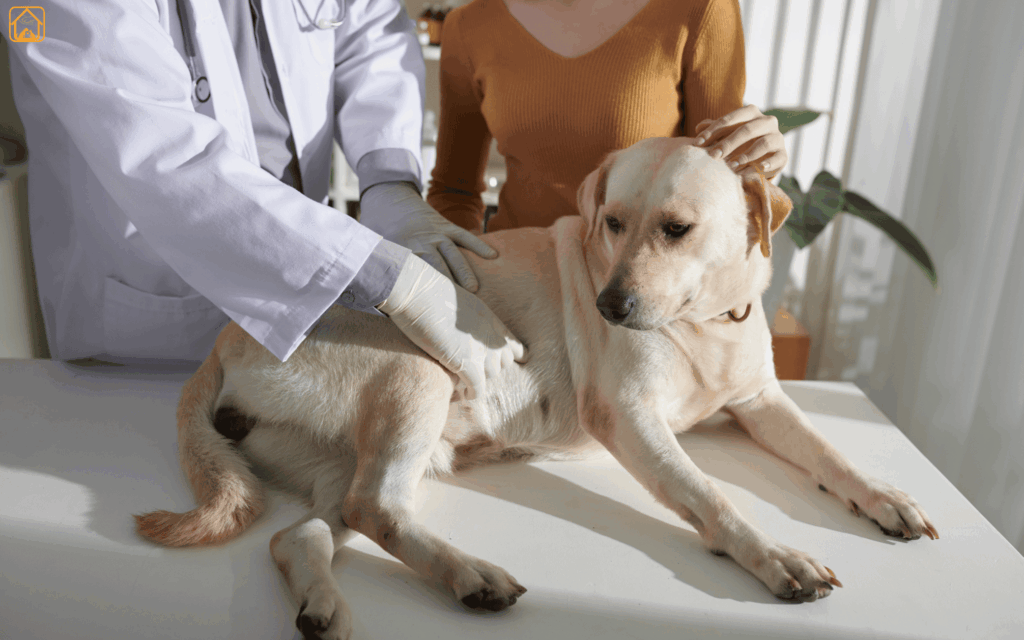
Keeping Your Home (and Dog) Clean & Comfortable
Managing your dog during her heat period means a little extra planning, but it’s nothing you can’t handle. Here are some tried-and-true tips:
- Hygiene: Dog diapers or washable period panties help protect furniture and floors. Change them often (every 3–4 hours) to avoid irritation. If you skip diapers, place washable blankets or towels in your dog’s favorite spots.
- Comfort: Offer quiet, cozy spaces. Some dogs want more attention, others less, let her set the pace. Keep up with gentle walks (on leash!), and avoid crowded dog parks.
- Cleaning: Use pet-safe cleaners on spots. Bathe her only if needed, and never use harsh soaps on her sensitive areas.
- Supervision: Never leave her unattended outside, even in a fenced yard. Intact males can be very determined!
True story: One week, I did more laundry than in an entire college semester, but my dog was clean and happy. It’s a short season, and keeping things fresh makes a big difference for everyone.
When to See the Vet
- If bleeding is excessive or lasts longer than 3–4 weeks
- If you notice pus, foul odor, severe swelling, or signs of pain
- If your dog becomes lethargic, loses appetite, or seems ill
Preventing Unwanted Pregnancy and Health Risks
It only takes a moment, one open door or distracted walk, and your dog’s mating period could end up with an unexpected litter. Here’s how to stay ahead:
- Spaying: The most effective way to prevent dog pregnancy and lower health risks (like pyometra, a dangerous uterine infection) is spaying your dog. Vets often recommend spaying before the first or second heat for most breeds, but large breeds may benefit from waiting, always check with your vet.
- Separation: Keep your female dog away from intact males during her entire heat cycle, even indoors. Use baby gates, crates, or closed doors if needed.
- Supervision: Walk her on leash, and skip dog parks or busy areas until her cycle ends.
- Watch for Health Issues: If discharge is unusually foul-smelling, very heavy, or your dog seems sick, contact your vet right away.
Don’t underestimate how far a determined dog will go, trust me, I’ve seen a neighbor’s husky scale a six-foot fence for love! Prevention is always easier than a surprise litter.
Sometimes, dogs show pregnancy symptoms without actually being pregnant. To understand if it’s a real pregnancy or just a phantom one, check out our Dog Phantom Pregnancy Guide and give your pup the right care from the very beginning.
FAQs About Dog Heat Cycle, Periods, and Care
1. How long is a dog in heat bleed?
Most female dogs bleed for around 7 to 10 days during the first stage of heat. The discharge may start red and become lighter over time. It’s part of a natural cycle and varies slightly from dog to dog.
2. What are the 4 stages in the dog’s heat cycle?
The dog’s heat cycle has four stages:
- Proestrus: Swelling and bleeding begin.
- Estrus: She’s fertile and may mate.
- Diestrus: Pregnancy may happen or hormones shift.
- Anestrus: The body rests before the next cycle.
3. How do you know when dog heat is over?
Your dog’s heat is likely over when the bleeding stops, swelling reduces, and she no longer attracts male dogs. Her behavior returns to normal, and signs of restlessness or nesting fade. This usually happens after 2 to 3 weeks.
4. How to stop female dog heat?
The only way to permanently stop a female dog from going into heat is through spaying. This surgery removes the reproductive organs and prevents future cycles. It also reduces health risks like infections and certain cancers. Always consult your vet before deciding.
5. Do dogs have periods like humans?
Not exactly. Dogs have an estrous cycle, which includes a period of bleeding (often called a “dog period”), but it happens about twice a year and is part of their reproductive process, not a monthly menstrual cycle like humans.
6. How long is a dog in heat bleed?
Bleeding usually lasts 7–10 days in the proestrus stage, though some dogs bleed for a shorter or longer time. The discharge may become lighter and straw-colored during estrus. If bleeding persists beyond 3–4 weeks or seems excessive, see your vet.
7. At what age do female dogs get their first period?
Most dogs have their first heat between 6 and 12 months old, but small breeds can start earlier, and large breeds may not start until 18–24 months.
8. Can I stop my dog from bleeding during her period?
You can’t stop the bleeding itself, as it’s a normal part of the cycle. However, spaying will prevent future cycles. For hygiene, use dog diapers and regular cleaning.
9. Is my dog in pain during her heat cycle?
Most dogs are not in pain during heat, though some may be restless or act uncomfortable. If your dog seems to be in pain or you notice unusual symptoms, consult your veterinarian.
10. How can I tell if my dog’s cycle is abnormal?
Irregular cycles, heavy or foul-smelling discharge, or signs of illness should prompt a call to your vet. Some irregularity is normal in young dogs, but big changes always deserve a checkup.
11. Should I let my female dog have one litter before spaying?
There’s no medical benefit to letting your dog have puppies before spaying. In fact, early spaying reduces many health risks.
Conclusion
The dog heat cycle is a completely natural part of your female dog’s life. By understanding the signs, stages, and timing, you can support her physical and emotional well-being while also protecting her from accidental pregnancy and health risks.
Still have questions? Your veterinarian is always the best resource for concerns about your dog’s heat cycle, periods, and care. You can also refer to official resources for accurate information about the dog heat cycle.
